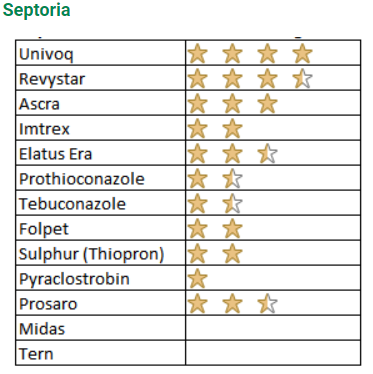
Teagasc Crop Report
Current issues 2024
Current issues 2024
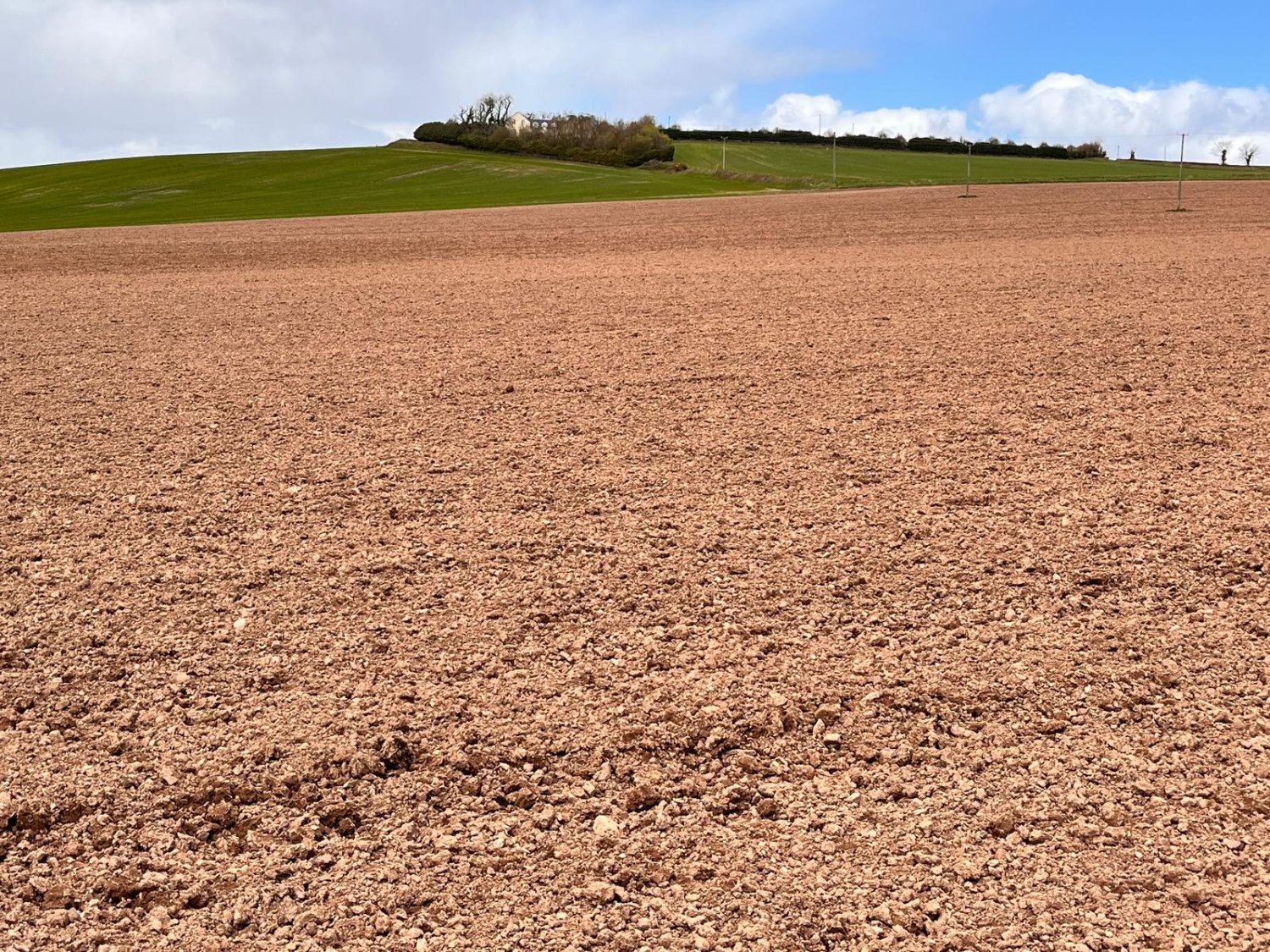
To view the full report you must have an existing account with Teagasc ConnectEd.
Farmers sign in hereAlready have a ConnectEd account? Connected Client or Teagasc staff log in here
Risk Mitigation
The poor autumn and winter conditions is now compounded by the late spring, with a huge volume of work to be completed. At the end of January Teagasc estimated there was a seed shortage of approximately 22,000 hectares. This was dependent on planting approx. 3,500 ha winter wheat seed (which hasn’t happened) and also planting all of the available spring wheat (10,000 ha) and spring beans/peas (15,000 ha). Farmers and the broader industry are understandably worried about planting these crops so that the overall area of tillage crops can be maximised in 2024.
There are a number of areas which should be considered when deciding to plant different crops this year. These are outlined below:
- Planting spring wheat and beans should be considered for as long as possible to maximise the area of tillage crops in Ireland. If these crops are not planted an even larger deficit of spring barley seed will result in a large chunk of the tillage area not being planted and potentially lost to tillage
- Late planted spring wheat could be considered for whole crop silage if a suitable client is available
- Keeping break crops ( beans and oats) in the rotation, keep the following in mind
- Allows the entry of higher yielding/margin crops next year (first wheats)
- Cross Compliance rules, specifically crop rotation rules see here , state at least two different crops need to be sown in each parcel over a four year cycle. Where a farm plants the same crop again the farm may be forced to make significant changes to cropping in 2025 or 2026.
- Consider all crop options – Given the current weather there may be more opportunity to sell forage crops to neighbours. Always ensure there is a contract in place before planting Link to a forage contract here
- Crop diversity will allow a spread in planting dates, fertiliser/spraying, and harvesting. Consider the following;
- Relying on just one or two crops over a very large area can increase workloads for critical jobs to a point where it is unsustainable for either the equipment or operator
- Later planted crops will be harvested later (into September) decreasing the number and length of harvest days and substantially increasing the risk of harvest loses
- Consider planning a crop type area around realistic combining rates, where harvest days of over 3 days for any one crop could be deemed very risky
- Examine the crop margin (not yield) carefully, the following factors should be consider
- Avail of fixed price offers where available e.g. beans, as these may offer considerable value compared to the falling grain prices
- Direct payments such as Protein Payment (~ 350-600/ha) and the Straw Copping Scheme (€150-250/ha) as part of the income.
- Contact your usual straw customers and look for a solid commitment and an agreed price for straw purchases in 2024.
- Assess ground in the coming days as to the real potential for this land to dry out. There are reports it will be at least the middle of April before any land work can be start on very heavy land. The harvest date of the planted crop should be carefully considered in these fields
- Based on past experience on many farms of delayed planting crops into wet ground can be a loss making exercise. Many may be forced into considering a crop type they did not plan for if there is not enough spring cereal seed available. Consider the following
- Fallow or leaving the land without a crop for the year is not something to be taken likely as weed growth during the summer will increase the weed bank, ground with no cover can become compacted and lead to runoff, reserves of nitrogen will be lost and financial fixed costs (light, heat, car, depreciation, etc.) are all spread over this land. In all this should be a last resort for any farmer
- Other alternatives such as red clover, or summer cover crops can be considered. See cost comparisons below
- Promotion of forage contacts between tillage and livestock farmers with clear binding payment terms. This could work for red clover where tillage farmers has €300 to cover establishment costs
Revised crop margins 2024
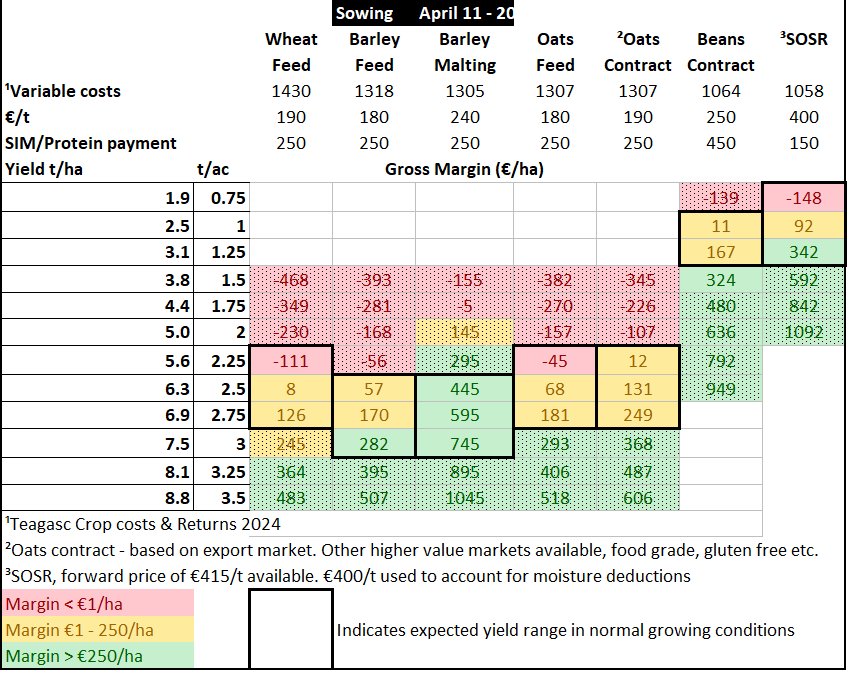
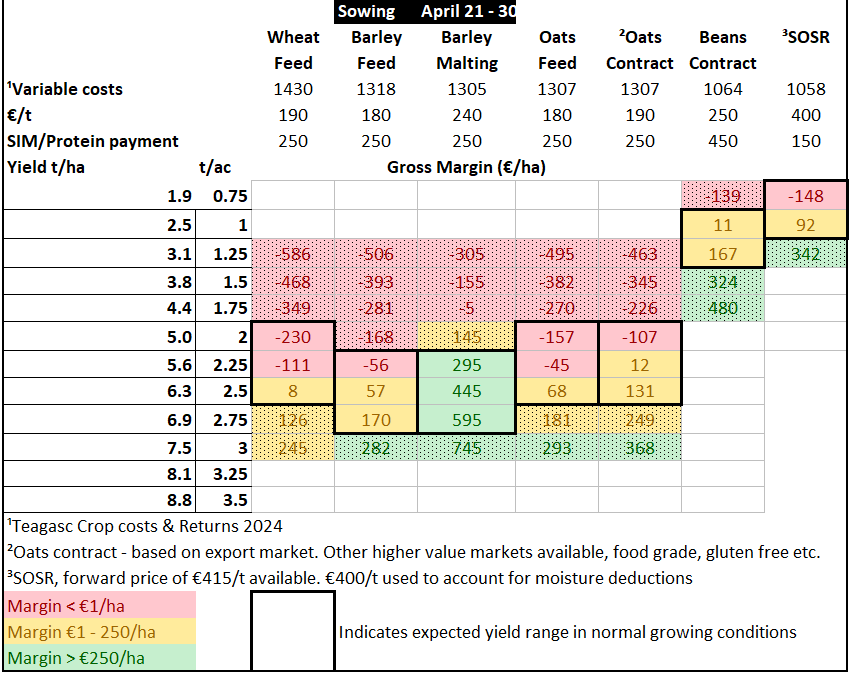
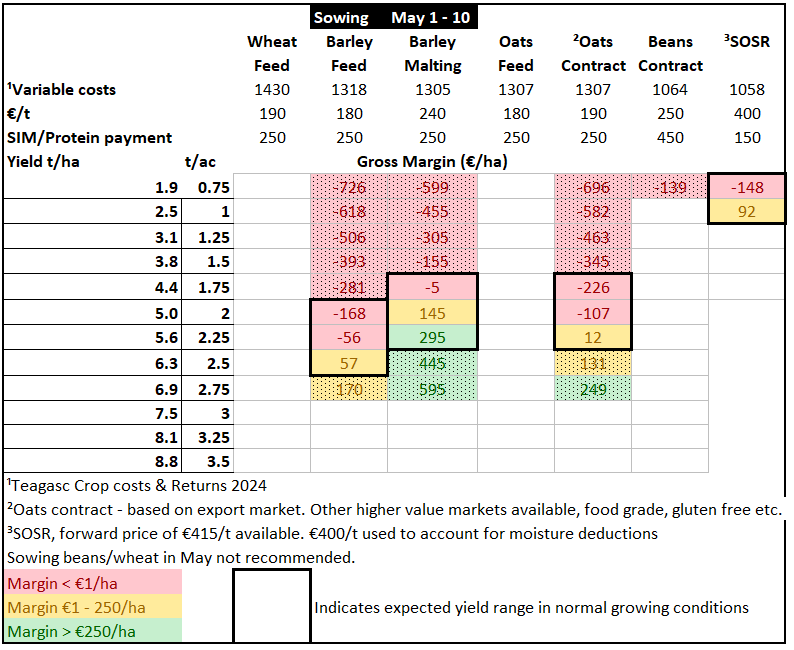
Nitrogen for late sown crops
- Crops take up N by growth stage so majority of nitrogen uptake will still take place after GS30.
- Putting a higher proportion in the seedbed will help if a dry period follows sowing but there is a risk of nitrogen losses if heavy rain follows. Applying nitrogen when the tramlines are visible is a compromise.
- Total nitrogen for feed crops should be based on yield potential. Use sowing date and establishment percentage as a guide. A 6.5t/ha crop has a requirement of 135kg/ha on index 1 soils. Add an additional 20kg/ha for every tonne expected over 6.5t.
- Reduce nitrogen rates for brewing barley equivalent to expected yield reduction when compared to a normal sowing date.
- Distilling is likely to be a real challenge with late sown crops. A 20 kg N/ha reduction but with some lower limit, to avoid yield loss due to N deficiency as well as the late sowing. If the recommendation was 120 kg N/ha reduce to 100 kg N/ha.
Crop establishment in a difficult spring
Dermot Forristal, Teagasc, Oak Park.
Recent and current conditions are obviously extremely challenging for soil cultivation and leave the soil prone to traffic damage too. Growers will seek to balance the need to get a crop in as soon as possible, with the need to: have acceptable seedbed conditions; avoid subsurface compaction; and to get a good proportion of the planned area sown.
- There are concerns about the ability to get crops sown in a very short window; do we have sufficient machine capacity for cultivation and sowing in a 2 week period?
- Ploughing is the major concern as it’s high power demand usually results in a lower work-rate per labour / tractor unit. But a critical difference this year, is the lack of a significant proportion of ploughing being completed in advance of secondary cultivation and sowing.
- Increasing our ability to plough quickly is not easy. We should ensure that:
- Every available plough, tractor and labour unit is mobilised, if there are unused ploughs available (autumn min-tillers, reseeding contractors, dealer’s yards etc.). The bigger challenge though is skilled labour; silage contractors may have some leads, but all contractors will be busy. If labour is available, shift-working with the plough may be an option, but only if there are sufficient competent operators to do it safely.
- Ploughing shallow (175-220mm), if there is no need for excessive depth, will sped the job up a little if power is limiting.
- Make sure there is nothing to slow the plough down: gates, fallen boughs, no support diesel etc
- Consider, in consultation with your advisor, leaving the field headlands fallow. This will speed up all operations, particularly ploughing, much more than the area reduction, as headland work, particularly ploughing, can be slow. It’s feasible as it will often remove the lowest yielding area of the crop (less profitable) in a season where spring crop margins could be very low.
- Tilling / sowing and spraying can be done without headland runs too, but the fertiliser spreader should cross the ploughing for the end run to give an even application across the sown end.
- Set up markers to ensure all machinery work ends at the same point and that it is mapped properly for allocation to ‘fallow’ or ‘crop’ in your BISS application.
- Carefully consider impact on rotations, weeds, field surface etc.
- This is worth considering, as we reach the end of April and extra seed would be available for higher sowing rates in the main field areas.
- If there are non-inversion type min-till machines available for deeper working, these can be exploited too, instead of the plough, to speed up the initial cultivation.
- Tine or tine and disc combination machines (‘top-down’ type etc.) may be best as 150mm depth probably needed to help the ground dry out. Use carefully to avoid creating wet loose lumps. Disc-only machines may not achieve the depth and may compact below the disc in these conditions.
- A 150kW (200 hp) tractor and 5 furrow plough may plough 1.4 ha (3.5 acres) per hour. The same tractor and driver with a 4m tine and disc cultivator would more typically cover 3.5 ha (8.5 acres) per hour.
- But ensure the following drilling combination can sow in the conditions created by the cultivator.
- Shallow tillage, strip-till drilling and direct drilling, without prior primary cultivation are not good options for late spring sowing.
- Use the waiting period well:
- Examine all fields with a spade and plan work order and mark parts of fields that will not be workable.
- Ensure all machines are ready; with wearing parts replaced now and not in mid-season.
- Plan for what to do if a machine breaks down or gets stuck, vis a vis tractor or implement replacement, owing out etc.
- Get all seeders and fertiliser spreaders calibrated for all products being used.
- Plan out seed delivery to field well to minimise sowing disruption.
- Keep in touch with others for moral and practical support.
- Think of BISS application – consult your advisor particularly if headland fallow etc. being considered.
- When working the soil, remember it’s likely to be wet underneath while drying out quickly on top:
- Use lighter tractors where they will do the job and consider wheel/tyre sizes /dual wheels etc., if you have the option.
- Use the minimum tyre pressures for the load being carried.
- Switch headlands around if necessary/possible to avoid turning on wetter headland.
- Plan work carefully to reduce passes and all associated traffic (including seed delivery /drill filling etc.)
- Press or pack ploughed ground if it turns up in a blocky smeared structure, and avoid multiple passes of cultivating implements which will dry out the seedbed despite wetter conditions deeper in the profile.
- Conserve surface moisture as much as possible and roll post sowing when conditions allow.
- With beans, it may be best to avoid deep sowing, as its likely any bird challenge will be diluted by all crops being sown together and it would be important get the crop over the ground as quickly as possible. Don’t delay with pre-emergence herbicides however.
- If particular problems with drains, headlands, gateway locations etc. are present, make note of their location and consider remedial action for next year.
Winter Wheat Disease control programme 2024
Leaf 3 is an important development stage for disease control in winter wheat, this year we are seeing a big variation in leaf 3 emergence between the different drilling dates so crop will have have to be dissected to properly identify the correct timing see attached video on dissecting wheat plants to identify leaf 3
Many crop will have received a leaf (T0) spray in the last few weeks and will be due for the leaf 3 spray in the next week to 10 days see below findings from Oak Park trials over the last number of years and the subsequent strategies for leaf 4 and leaf 3 applications..
Leaf 4 spray
- Yield response: NONE for septoria. Active Yellow rust will require control
- Timing: apply with PGR/onto leaf 4 fully emerged.
- Recommendations: for yellow rust = tebuconazole + strob for active rust
- Notes: Teagasc trials have consistently shown no yield benefit from adding azoles, at Leaf 4 for septoria control and will potentially compromise later control of septoria
Leaf 3 spray
- Timing: Apply onto final leaf 3 fully emerged.
- Recommendations: 1.5 l/ha folpet + 80-100% (SDHI/Qii + azole mix)
- Yellow rust - Careful selection of fungicides required - Strong products include - Elatus Era, tebuconazole, Comet/Modem
- Notes: Assess for eyespot and mildew also at this timing
Winter Wheat disease control strategy Leaf 3
|
Timing |
Target Diseases |
Product Options (rate/ha) |
|---|---|---|
|
Leaf 3 (third last leaf fully emerged) Date ~Late April |
Septoria, Yellow Rust & Eyespot |
Arizona/ Mirror/ Stavento 1.5 L + Azole + SDHI/Qii (80-100% rate) e.g. Revystar XL, Aquino, Peacoq, Questar For Yellow Rust eradicant control - Elatus Era/Velogy Era/Tacanza Era 1.0L/ha, Comet/Modem 1.0 L/ha, Tebuconazole 1.0L/ha |
|
+Mildew? |
+ Mildewcide e.g. clayton Midas ½ rate |
Click on the Table of available fungicides 2024 for a full list of available fungicides.
Click on the picture below for fungicide ratings for septoria, yellow rust, brown rust and mildew.
Winter wheat monitor crops 2024
|
Location |
Variety |
Drilling Date |
Rotation |
Growth Stage |
Disease |
|---|---|---|---|---|---|
|
Oak Park |
Graham |
October 15th |
Beans |
GS 31 Leaf 4 80% | Septoria on lower leaves |
|
Athy |
Graham |
October 16th |
W Oats |
Leaf 3 @ 80% | Septoria on lower leaves |
|
Donegal |
Costello |
October 12th |
Potatoes |
Leaf 3 30% | Upper leaves clean |
|
Midleton |
Graham |
November 17th |
Maize |
GS 31 | Low level of septoria |
|
Backweston |
Graham |
November 8th |
S Oats |
GS 31 GS 31 |
Low levels of septoria on both |
|
Wicklow |
Dawsum |
October 9th |
WOSR |
GS 31 GS 31 |
|
|
Kilkenny |
Graham |
October 9th |
W Oats |
GS 30 | |
|
Laois |
Champion |
October 12th |
WOSR |
GS 32 (Leaf 4 30%) | Septoria on lower leaves |
|
Kildare |
Lumos |
October 11th |
WOSR |
GS 30/31 | |
|
Kildalton |
Dawsum |
November 7th |
WOSR |
Leaf 3 30% emerged | 30% Septoria on Leaf 6 |
|
Dublin |
Graham |
Mid October |
WOSR |
Leaf 4 100% Leaf 4 50% |
|
|
Wexford |
Champion |
October 9th |
W Oats |
GS 31 Leaf 4 100% |
Leaf 3 peeping |
|
Mallow |
Graham |
October 14th |
Beans |
GSS 31 |
|
|
Ballyderown |
Dawsum |
November 3rd |
WOSR |
GS31 L3 10% GS30 L3 20% |
Septoria |
Winter barley monitor crops 2024
|
Location |
Variety |
Drilling date |
Rotation |
Growth Stage |
Comments |
|---|---|---|---|---|---|
|
Athy |
Cassia |
October 5th |
W Oats |
GS 32 GS 32 GS 33 |
Clean for Cassia Small bit of mildew Flag leaf 30 % Emerged |
|
Oak Park |
Cassia |
October 6th |
W Wheat |
GS 31/32 GS 21 |
Ryncho on lower leaves Clean but a lot of crow damage |
|
Backweston |
Tardis |
November 6th |
S Oats |
GS 32 | Low levels of ryncho |
|
Kilkenny |
Joyau |
October 17th |
WOSR |
GS 32 | |
|
Kildare |
Tardis |
October 4th |
W Barley |
GS 31/32 GS 31 |
|
|
Wicklow |
Belfry |
October 8th |
W Oats |
GS 33 | |
|
Laois |
Joyau |
October 13th |
WOSR |
GS 37 GS 33 |
Flag leaf just peeping Small bits of BYDV evident |
|
Kildalton |
Tardis |
October 9th |
W Oats |
Leaf 1 40% emerged | Clean |
|
Donegal |
Tardis |
October 2nd |
W Oats |
GS 31/32 | Clean |
|
Midleton |
Joyau |
October 15 |
W Wheat |
GS 32 | |
|
Dublin |
Joyau |
October 15th |
W Wheat |
GS 32 | Clean but brown rust in other crops of Joyau |
|
Mallow |
Tardis |
October 15th |
S. Barley |
GS 31/32 | Clean |
|
Enniscorthy |
Tardis |
October 18th |
W. Wheat |
L2 40% | Low disease |
|
Ballyderown |
Cassia |
October 16th |
W Wheat |
L2 40% L2 30% L1 20% L2 50% L1 30% L1 20% |
Clean Clean Clean Clean Clean Clean |
Winter oat monitor crops 2024
| Location | Variety | Drilling date | Rotation | Growth Stage | Comment |
|---|---|---|---|---|---|
| Athy | Isabel Husky |
November 6th November 3rd |
Peas W barley |
GS 31/32 GS 31/32 |
Clean |
| Kildalton | Husky | November 7th | S Barley | GS 32 | Clean |
| Kildare | Husky | October 15th | Grass | GS 30/31 | |
| Donegal | Isabel | October 3rd | W Barley | GS 31 | Clean |
| Oak Park | Husky | October 15th | S Barley | GS 31/32 | Clean |
| Enniscorthy | Husky | November | S.Barley | GS 31 | Clean |
